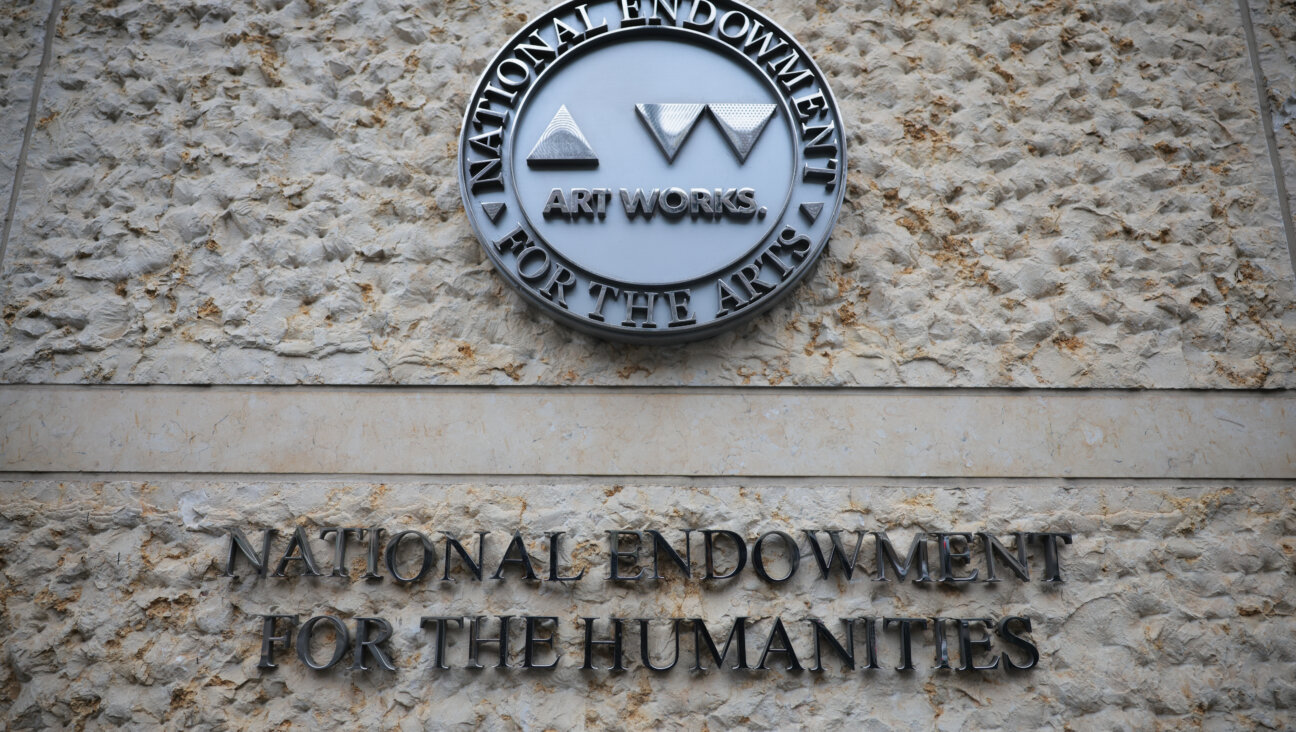Righteous Indignation: How Are We To Understand the Alleged Spinka Scandal?

The Hasidic Rebbe, or “Grand Rabbi,” is no ordinary Jewish spiritual leader. Unlike rabbis in other denominations, from Reform to the fervently Orthodox, the Rebbe in Hasidic communities is much more than a teacher, adjudicator of Jewish law and community leader. He is nothing less than a conduit between his followers and the Heavens; a man believed by the faithful to be immaculately holy, endowed with a direct line to God Himself and thereby blessed with supernatural powers that include miracle-healing, divination and the magical granting of every imaginable human need, from bequeathing children to the clinically barren to endowing wealth to the chronically impecunious. A classic Hasidic adage assures that it is within the Rebbe’s power to bestow believers with “offspring, long-life and sustenance.”

And speaking of “sustenance,” at least one contemporary Hasidic Rebbe is allegedly also blessed with the power to grant sophisticated money-laundering and tax-evasion services to his supporters. When the Grand Rabbi of the Boro Park clan of the Spinka Hasidic dynasty, 59-year-old Naftali Zvi Weisz — or as he is reverently known to his followers, “His Honored Holiness our Master, Teacher and Rabbi of Spinka, Shlita” — was busted by federal agents in Los Angeles on December 19, along with his gabbai, or personal assistant, Rabbi Moshe Zigelman, and four co-conspirators, on charges of having defrauded the American government of almost $35 million, the Hasidic world entered into paroxysms of shock, dismay and anger. The mood of this deeply insular ultra-Orthodox community only darkened further as copies of the 45-page federal indictment detailing no fewer than 37 criminal charges against the Rebbe and his cohorts, as well as the juicy FBI transcripts richly documenting the surveillance methods employed to uncover the Spinker Rebbe’s elaborate schemes, hit the Internet.
But the lion’s share of the Hasidic community’s anger was directed not at the alleged crimes of their Rebbe, but rather at the FBI’s informant. Referred to in FBI documents only as “RK,” the informant cut an immunity deal with the government years ago and was the key figure in blowing the whistle on the Rebbe’s alleged scam. The New York Yiddish weeklies published under Hasidic auspices, as well as numerous comments on a variety of Hasidic Web sites, all cried foul — demanding a community-wide inquest to unmask and root out the “evil spy and informer” who betrayed and defamed the Holy Spinker Rebbe, Shlita.
The matter of second-greatest urgency expressed in the Hasidic media was fulfilling the mitzvah of pidyon shvuyim, or “redeeming the captive” rabbi. Jewish history’s most famous rabbinic captive, the legendary 13th century German sage, Rabbi Meir of Rotenburg, heroically refused to be released at any onerous expense to the Jewish community, choosing instead to spend the last seven years of his life in brutal imprisonment, despite his innocence of any crime. Indeed, it is this historical image of a sage held captive by a violent Jew-hating regime that established the centrality of the mitzvah of redeeming captives in the classic halakhic tradition.
But the Spinka Rebbe is no Rabbi Meir of Rotenburg; Weisz, after pleading not guilty of all charges, apparently had no compunctions about accepting the $2.5 million bond scared up by his followers — and America is not 13th-century Germany.
How are we to understand such charged corruption, hardly the first time by a Hasidic organization, but certainly the largest ever in scale, and the first allegedly directed personally by a bona fide Hasidic Rebbe? And more urgently, how can one explain his followers’ reaction to the news of the charges against their leader? The anger directed by pious Jews at the American government, its law-enforcement agencies and especially their informant — as well as the great rush to bail out a man revered as an agent of God Himself, now accused of a host of very serious criminal counts — beg explanation.
There has long been a violent hatred, especially within Hasidic culture, for informants. Almost from the moment of its inception as a religious revivalist movement in late 18th-century Poland, some of the greatest Hasidic leaders were jailed for a variety of bogus criminal allegations, most commonly sedition. As a matter of course, governments used Jewish informants to build false cases against these Rebbes.
To this day, the most renowned Hasidic sect, Chabad-Lubavitch, religiously celebrates the anniversaries of the release from Russian jails of its revered founding Rebbe, Shneur Zalman of Lyadi in 1798, as well as the subsequent liberations of his descendants, Rabbi Dov Ber Schneerson in 1826 and Rabbi Joseph Isaac Schneerson, who had been imprisoned by the Soviets in 1927. Behind all these unjust incarcerations lay the mischievous work of Jewish informants, initially from among the misnagdim, Hasidism’s mainstream rabbinical opponents, later the maskilim or Jewish champions of the European Enlightenment, and finally the radicals of the notorious Yevseksia, the “Yiddish division” of the Communist Party. Indeed, during the dark days of Soviet Communism, zealously anti-ecclesiastical members the Yevseksia did the government’s dirty work of shutting down synagogues and yeshivas and jailing their rabbinic leaders. It is thus for legitimate historical reasons that, in the Hasidic psyche, the deepest contempt is reserved for Jewish informants, or mosrim.
A dramatic illustration of the depth of hatred harbored by Hasidim for these informants is provided by one of the most unseemly episodes in Russian Jewish history. In 1836, two Jews suspected of being informants to the notoriously antisemitic Tsar Nicholas I — Yitzhak Oksman and Shmuel Shvartzman — were brutally murdered. Oksman’s badly beaten and frozen body was retrieved by fishermen from a river near the town of Wonkowcze, in the Podolia region, while Shvartzman’s remains were never found. His body is believed to have been quartered by Hasidic butchers and incinerated in the oven that warmed the community’s mikvah, after he had been strangled — according to some fanciful accounts, by the retsuos, or leather bands, of his own tefilin — during morning prayers in the shul in the town of Nowo-Ushits.
This horrible episode became ensconced in Russian Jewish collective memory as Mayseh Ushits, the notorious Ushits Affair. Among its most sensational consequences was a series of violent interrogations, arrests and brutal incarcerations, over a span of some three and a half years, of one of the most revered Hasidic Rebbes of his era, the legendary Rabbi Israel of Ruzhin, who was suspected, though never actually convicted, of putting out the hit on Oksman and Shvartzman.
Even if he had put out the hit, Rabbi Israel would have been merely following the dictates of Jewish law that classify an informant as a mortally dangerous rodef, or pursuer of Jewish lives, and thus mandate his murder. It was precisely the declaration by some extremist rabbis from the Gush Emunim settlers’ movement that Israeli prime minister Yitzhak Rabin was, according to Jewish law, a rodef, on account of his willingness to turn over parts of biblical Israel to her “enemies,” that inspired Yigal Amir to assassinate him. And the examples keep coming: At the very same time that some Spinker Hasidim were calling for the blood of the informant who betrayed their Rebbe, a leading Chabad rabbi in Israel, Shalom Dov Wolpe, named Prime Minister Olmert and his entire cabinet as mosrim, and declared that “the punishment” of Olmert, Foreign Minister Tsipi Livni, Vice Premier Haim Ramon and Defense Minister Ehud Barak “should be to hang from the gallows.”
And so, Mayseh Ushits might be viewed as a cautionary tale for the alleged informant at the heart of today’s scandal. The Russian despots who persecuted the Hasidim and imprisoned their leaders were motivated by a lethal hatred of both Jews and Judaism, while the FBI is quite simply enforcing the laws of a just and uniquely philosemitic land (with the assistance, by the way, of a small team of FBI Yiddish translators, as a fascinating little footnote in the Bureau’s transcripts revealed). But this distinction is lost on the Spinker Hasidim, to whom the very idea of historical evolution is entirely foreign and whose main concern, now that the Rebbe is “free,” is to wreak God’s bloody vengeance upon the despised informant.
Given the historical disdain for informants shared by all Hasidic sects, one imagines that some followers of any given one of them might react similarly. Still, there seems to me to be something unique about the Spinka case. Many other sects of Polish and Russian origin have found themselves mired in financial and legal scandals. But I believe their shady activities pale, both in magnitude and frequency, next to those of the Rumanian and Hungarian Hasidim. Why?
The answer can be found mainly in a failure of historical and theological evolution among these groups, despite the dramatic evolution of their circumstances since arriving in America. The mind-set of numerous smaller, mostly Rumanian and Hungarian Hasidic sects is typically mired in a romance with the “glory days” of their respective founding Rebbes. In the case of Spinka, this harkens back to the distinctly inglorious late 19th century era of what Jewish historians have dubbed “decadent Hasidism” in the loosely Austrian-ruled district of Bukovina, in the infamously lawless land of Rumania.
Indeed, it may all go back to the father of “decadent Hasidism,” Rabbi Israel of Ruzhin — who, you’ll recall, was also the very man suspected of putting out the hit on Oksman and Shvartzman in the Mayseh Ushits. Following his release from prison in February 1840, Rabbi Israel fled Tsarist Russia to the Austrian-ruled Rumanian district of Bukovina, there to establish the wealthiest and most unabashedly materialistic dynasty in Hasidic history. As the Israeli scholar David Assaf has richly documented in his magisterial biography of Rabbi Israel, this Rebbe inaugurated a uniquely opulent style of Hasidic leadership that spread like prairie fire to Hasidic courts all across Rumania, modeling itself after the decadent lifestyle of Central Europe’s most debauched royal families. Rabbi Israel unabashedly demanded enormous sums of money from his Hasidim (presumably without offering kickbacks or illegally inflated tax-receipts). He wore outrageously lavish, silver and gold-laced outfits, favored royally decorative walking-sticks, was serenaded to sleep by his personal orchestra and was transported in a gilded chariot said to have been drawn by a dozen white stallions (some say six Arabians, while others argue three Rumanian nags). And he infamously was fond of declaring, as a kind of personal motto, “All the money in the world belongs to me.”
Historians of Hasidism have long considered the establishment of R. Israel of Ruzhin’s palatial headquarters, and those of his followers such as the Rebbes of Sadigora and Buhush in Bukovina and Tchortkov in Galicia, as the inception of a period not only of material decadence but also severe theological and intellectual decline within Rumanian Hasidism. For alongside the amassing of considerable fortunes by these Hasidic Rebbes of Rumania, there was a discernable descent in learning and a steep rise in superstitious gullibility on the part of their Hasidim, particularly relating to the Rebbes’ alleged supernatural abilities and personal immaculateness.
While the early secular historians of East European Jewry saw nothing but decadence in 19th century Hasidism, the reality is more complex. For example, in 1869, Rabbi Hayyim Halberstam of Zanz — whose descendants founded the flourishing Bobover Hasidic sect, the largest today in Boro Park — inaugurated an all-out war against the Sadigorer Rebbe’s debauched style of leadership, one that lasted for many years. It is for this reason that Rumanian Hasidism was rife with all manners of financial corruption and vulnerability to a host of criminal tendencies, in marked contrast to the more scholarly, at times pseudo-rationalist, major Polish and Russian Hasidic dynasties — such as Bobov, Ger and Lubavitch.
Less than a hundred miles east of the palatial courts of the Hasidic dynasties established by the Ruzhiner Rebbe and his heirs, lies the tiny Rumanian hamlet of Spinka, in the Maramures region bordering on Hungary. It was there that the first Spinker Rebbe, R. Joseph Meir Weisz (b. 1838), known as the Imre Yosef after the title of his entirely unremarkable Torah commentary, established his small sect. His son, R. Isaac Weisz, inherited the leadership of Spinka in 1909 and along with almost all of his followers, perished in 1944, when the Nazis began the feverish deportation of the Jews of the Maramures region directly to the gas chambers of Auschwitz.
After the war, the Spinka sect became fragmented among almost a dozen rabbinic descendants of its original founders. Spinka is today less a true Hasidic dynasty than a network of small shtibelekh and charitable institutions in Williamsburg, Boro Park, Jerusalem, Bnai Berak, Antwerp and London, each of whose spiritual leaders is referred to as a “Spinker Rebbe.” Perhaps the most tragic element in this terribly embarrassing scandal is that the only one of today’s many Spinker Rebbes who will likely “enjoy” historical posterity is the Boro Park Rebbe, Naftali Zvi Weisz. And this, of course, for the worst possible reasons.
Allan Nadler, a regular Forward contributor, is a professor of religious studies and the director of the Program in Jewish Studies at Drew University. His grandfather escaped from Rumania to Canada in 1909, where he was instrumental in establishing the Montreal shul of the late Shotzer Rebbe.
The Forward is free to read, but it isn’t free to produce

I hope you appreciated this article. Before you go, I’d like to ask you to please support the Forward.
Now more than ever, American Jews need independent news they can trust, with reporting driven by truth, not ideology. We serve you, not any ideological agenda.
At a time when other newsrooms are closing or cutting back, the Forward has removed its paywall and invested additional resources to report on the ground from Israel and around the U.S. on the impact of the war, rising antisemitism and polarized discourse.
This is a great time to support independent Jewish journalism you rely on. Make a Passover gift today!
— Rachel Fishman Feddersen, Publisher and CEO
Most Popular
- 1

Opinion My Jewish moms group ousted me because I work for J Street. Is this what communal life has come to?
- 2

Fast Forward Suspected arsonist intended to beat Gov. Josh Shapiro with a sledgehammer, investigators say
- 3

Politics Meet America’s potential first Jewish second family: Josh Shapiro, Lori, and their 4 kids
- 4

Fast Forward How Coke’s Passover recipe sparked an antisemitic conspiracy theory
In Case You Missed It
-

Film & TV In ‘The Rehearsal’ season 2, is Nathan Fielder serious?
-

Fast Forward Pro-Israel groups called for Mohsen Mahdawi’s deportation. He was arrested at a citizenship interview.
-

News Student protesters being deported are not ‘martyrs and heroes,’ says former antisemitism envoy
-

Opinion This Nazi-era story shows why Trump won’t fix a terrifying deportation mistake
-
Shop the Forward Store
100% of profits support our journalism
Republish This Story
Please read before republishing
We’re happy to make this story available to republish for free, unless it originated with JTA, Haaretz or another publication (as indicated on the article) and as long as you follow our guidelines.
You must comply with the following:
- Credit the Forward
- Retain our pixel
- Preserve our canonical link in Google search
- Add a noindex tag in Google search
See our full guidelines for more information, and this guide for detail about canonical URLs.
To republish, copy the HTML by clicking on the yellow button to the right; it includes our tracking pixel, all paragraph styles and hyperlinks, the author byline and credit to the Forward. It does not include images; to avoid copyright violations, you must add them manually, following our guidelines. Please email us at [email protected], subject line “republish,” with any questions or to let us know what stories you’re picking up.















